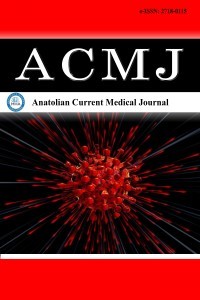1.
Elserafy AS, Okasha N, Hegazy T. Prevention of contrast induced nephropathy by ischemic preconditioning in patients undergoing percutaneous coronary angiography.Egypt Heart J. 2018;70(2):107-111. doi:10.1016/j.ehj.2017.12.004
2.
Moro AB, Strauch JGN, Groto AD, Toregeani JF. Creatinine level variation in patients subjected to contrast-enhanced tomography: a meta-analysis.J Vasc Bras. 2021;20:e20200161. doi:10.1590/1677-5449. 200161
3.
Moitinho MS, Santos ES, Caixeta AM, Belasco AGDS, Barbosa DA, Fonseca CDD. Contrast-induced nephropathy in patients submitted to percutaneous coronary intervention: an integrative review.Rev Bras Enferm. 2020;73(suppl 5):e20200190. doi:10.1590/0034-7167-2020-0190
4.
Brar SS, Aharonian V, Mansukhani P, et al. Haemodynamic-guided fluid administration for the prevention of contrast-induced acute kidney injury: the POSEIDON randomised controlled trial.Lancet. 2014;383(9931):1814-1823. doi:10.1016/S0140-6736(14)60689-9
5.
Kwasa EA, Vinayak S, Armstrong R. The role of inflammation in contrast-induced nephropathy.Br J Radiol. 2014;87(1041):20130738. doi: 10.1259/bjr.20130738
6.
Wang JG, Mahmud SA, Thompson JA, Geng JG, Key NS, Slungaard A. The principal eosinophil peroxidase product, HOSCN, is a uniquely potent phagocyte oxidant inducer of endothelial cell tissue factor activity: a potential mechanism for thrombosis in eosinophilic inflammatory states.Blood. 2006;107(2):558-565. doi:10.1182/blood-2005-05-2152
7.
Horne BD, Anderson JL, John JM, et al. Which white blood cell subtypes predict increased cardiovascular risk?J Am Coll Cardiol. 2005;45(10): 1638-1643. doi:10.1016/j.jacc.2005.02.054
8.
Kounis NG, Soufras GD, Tsigkas G, Hahalis G. White blood cell counts, leukocyte ratios, and eosinophils as inflammatory markers in patients with coronary artery disease.Clin Appl Thromb Hemost. 2015;21(2):139-143. doi:10.1177/1076029614531449
9.
Vural A, Aydın E. The predictive value of eosinophil indices for major cardiovascular events in patients with acute decompensated HFrEF.Medicina (Kaunas). 2022;58(10):1455. doi:10.3390/medicina58101455
10.
Vavalle JP, van Diepen S, Clare RM, et al. Renal failure in patients with ST-segment elevation acute myocardial infarction treated with primary percutaneous coronary intervention: predictors, clinical and angiographic features, and outcomes.Am Heart J. 2016;173:57-66. doi:10.1016/j.ahj.2015.12.001
11.
Ibanez B, James S, Agewall S, et al. 2017 ESC Guidelines for the management of acute myocardial infarction in patients presenting with ST-segment elevation: the task force for the management of acute myocardial infarction in patients presenting with ST-segment elevation of the European Society of Cardiology (ESC).Eur Heart J. 2018;39(2): 119-177. doi:10.1093/eurheartj/ehx393
12.
Levey AS, Stevens LA, Schmid CH, et al. A new equation to estimate glomerular filtration rate [published correction appears in Ann Intern Med. 2011;155(6):408].Ann Intern Med. 2009;150(9):604-612. doi:10. 7326/0003-4819-150-9-200905050-00006
13.
Senoo T, Motohiro M, Kamihata H, et al. Contrast-induced nephropathy in patients undergoing emergency percutaneous coronary intervention for acute coronary syndrome.Am J Cardiol. 2010;105(5):624-628. doi:10. 1016/j.amjcard.2009.10.044
14.
Butt K, D'Souza J, Yuan C, et al. Correlation of the neutrophil-to-lymphocyte ratio (NLR) and platelet-to-lymphocyte ratio (PLR) with contrast-induced nephropathy in patients with acute coronary syndrome undergoing percutaneous coronary interventions.Cureus. 2020;12(12):e11879. doi:10.7759/cureus.11879
15.
Zhang F, Lu Z, Wang F. Advances in the pathogenesis and prevention of contrast-induced nephropathy.Life Sci. 2020;259:118379. doi:10.1016/j.lfs.2020.118379
16.
Lu Z, Cheng D, Yin J, et al. Antithrombin III protects against contrast-induced nephropathy. EBioMedicine. 2017;17:101-107. doi:10.1016/j.ebiom.2017.02.009
17.
Ramirez GA, Yacoub MR, Ripa M, et al. Eosinophils from physiology to disease: a comprehensive review.Biomed Res Int. 2018;2018:9095275. doi:10.1155/2018/9095275
18.
Colon S, Luan H, Liu Y, Meyer C, Gewin L, Bhave G. Peroxidasin and eosinophil peroxidase, but not myeloperoxidase, contribute to renal fibrosis in the murine unilateral ureteral obstruction model.Am J Physiol Renal Physiol. 2019;316(2):F360-F371. doi:10.1152/ajprenal.00291.2018
19.
Kielar D, Jones AM, Wang X, et al. Association between elevated blood eosinophils and chronic kidney disease progression: analyses of a large United States electronic health records database.Int J Nephrol Renovasc Dis. 2023;16:269-280. doi:10.2147/IJNRD.S431375
20.
Widmer A, Linka AZ, Attenhofer Jost CH, et al. Mechanical complications after myocardial infarction reliably predicted using C-reactive protein levels and lymphocytopenia.Cardiology. 2003;99(1): 25-31. doi:10.1159/000068448
21.
Núñez J, Miñana G, Bodí V, et al. Low lymphocyte count and cardiovascular diseases.Curr Med Chem. 2011;18(21):3226-3233. doi:10. 2174/092986711796391633
22.
Holub K, Biete A. New pre-treatment eosinophil-related ratios as prognostic biomarkers for survival outcomes in endometrial cancer.BMC Cancer. 2018;18(1):1280. doi:10.1186/s12885-018-5131-x
23.
Yilmaz M, Kayançiçek H, Korkmaz H, et al. A new inflammatory marker: elevated eosinophil-tolymphocyte ratio associated with presence and severity of isolated coronary artery ectasia.Cardiovasc J Afr. 2020;31(5):227-235. doi:10.5830/CVJA-2019-049
24.
Çetin ZG, Demirtaş B. Understanding the significance of the eosinophil to lymphocyte ratio in individuals with microvascular angina.Bozok Tıp Derg. 2023;13(3):73-80. doi:10.16919/bozoktip.1341814
25.
Tosu AR, Kalyoncuoğlu M, Biter Hİ, et al. Association of eosinophil-to-lymphocyte ratio with coronary slow-flow phenomenon in patients undergoing coronary angiography.Arch Med Sci Atheroscler Dis. 2022; 7(1):e29-e35. doi:10.5114/amsad.2022.116662

